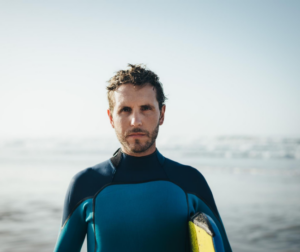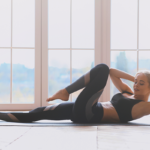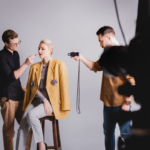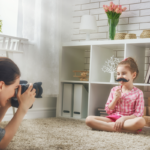Why you should practice your portrait photography skills
People love to look at people, which is why portrait photography is one of the most fascinating types of photography. The best portrait triggers the viewer’s emotional response to the subject. As a photographer, your task is to elicit the right kind of emotion from your viewers. You have to decide beforehand what kind of emotion you want to evoke and then set up a portrait to accomplish that result.

13 Know Your Subject
If you are paid to take a portrait photography shot, you will need to speak to your client regarding what kind of effect they want to get. A high-profile businessperson will want to feel respected, while an actress may need to look seductive or beautiful.
12 Emotional Subjects Lead to the Creation of Emotional Photographs
The simplest way to elicit the viewer’s right emotion is to have the subject show that emotion. When we see someone smiling, it makes us want to smile; when we see someone laughing, it makes us happy. But barely seen emotions, like anger and misery, make more dramatic photographs.
11 Put the Subject in Context
In a portrait, everything in the photo should attract the viewer’s eyes to the topic. Furthermore, you can use an interesting prop or background to add a context to the image and tell the viewer something regarding the subject. 
10 Try a New Angle
Portrait taken straight on is the most common, but taking a photo from a different perspective can make it more appealing. Rotating your camera to an unusual angle could add a feeling of motion to a shot.
9 Tell a Story in a Look
The subject’s eyes will always be the most significant aspect of portrait photography. Having your subject look right into the camera will generate an association between them and the observer. A subject looking outside of the frame causes the viewer to become interested in what they are viewing.
8 Use Natural Light through a Screen or Window
Portrait photography in direct sunlight may be unforgiving on the skin. Natural lighting through a screen, windows shutter blinds, or can soften the harshness of the light and help with a stunning portrait shot. Not to mention, it is cheaper compared to studio portrait lighting.
Shoot from the right height. To capture your eye-to-eye subject, take an extra step. Use equipment or physically get down to lower or raise your camera for the finest shot possible.
7 Shoot Flash from an Angle
On-camera flash gives a deer-in-the-headlight look, and while flat lighting might be a look you are looking for, it is more likely than not to be the look you usually want. Try flashing from an angle by having a friend hold it or using a light stand setup.
6 Experiment with Overexposure
Generally speaking, overexposure is something that photographers are trying to avoid. However, an overexposed picture, something unique to portrait photography, can genuinely help achieve a polished and clean look. This is because some contents, like flaws, are lost in overexposure. The trick here is to use it with moderation, so you are not overdoing it.
5 Shoot Candidly
Yes, you are standing in front of your subject with a camera in your hand, but that does not mean you cannot get a candid shot. Try to distract your subject by talking to you or a colleague of theirs. You can offer them a task or a photograph from afar, as well.

4 Get Closer
While this may sound stupid, this is one of the most important aspects of capturing great portrait photography. There are also several reasons to get closer to your subject, no matter who you shoot. Keep in mind, because the face is of primary importance to your photograph, it will take up most of the frame. Getting close will allow you to complete a frame, even if you’re shooting with a small point-and-shoot camera that doesn’t provide a telephoto capable zoom.
More importantly, when you’re close, rather than using a zoom, you’re lowering the depth of the field, which, in simpler terms, is the length between your focus point and some point in the range that is in focus. What this implies is that when you get near, you capture the face in a sharper focus, but the nearer you get, the shallower the depth of the field will become.
In effect, this blurs the backdrop, and because the lens is always looking for elements that are in focus, the facial features instantly stand out; the background is no longer distracting.
3 Use Color for Mood
Color or lack of it has a lot of power over the emotion in your photo; and hence, the quality of your portrait photography. Start by asking your model to wear a specific color or find a location ahead of time to get the scheme you are looking for. Get acquainted with the color wheel to understand what colors complement each other and which clashes.
2 Choose a Good Background for Your Portrait Photography
It is a no-brainer, but how often do we see otherwise great portraits shot against garish or distracting backgrounds? Don’t make that same mistake. While you could blur the background a bit by getting closer to your subject, a minimalistic environment doesn’t seem upsetting provides a better portrait. 
Look for backgrounds of solid color. Consider a background that complements your subject’s skin tone, or if you shoot a full-body shot and a torso shoot, look for shades that enhance your subject’s clothing.
1 Stay Committed, Keep Shooting
The key to improving your portrait photography skill is to have as much experience as you can. If you are new to the game, ask your friends for photoshoots. Ask your family, friends, or associates to get the camera in your hand and offer it for free until you are a professional. Here are some more tips in setting your first online portrait photography portfolio.
Remember to watermark your portrait photography with your logo, brand, contact information to ensure it’s copyrighted and protected from use without your permission.

































